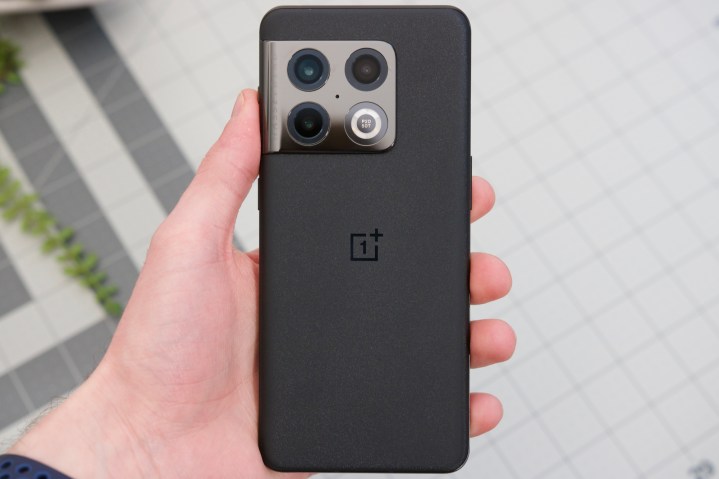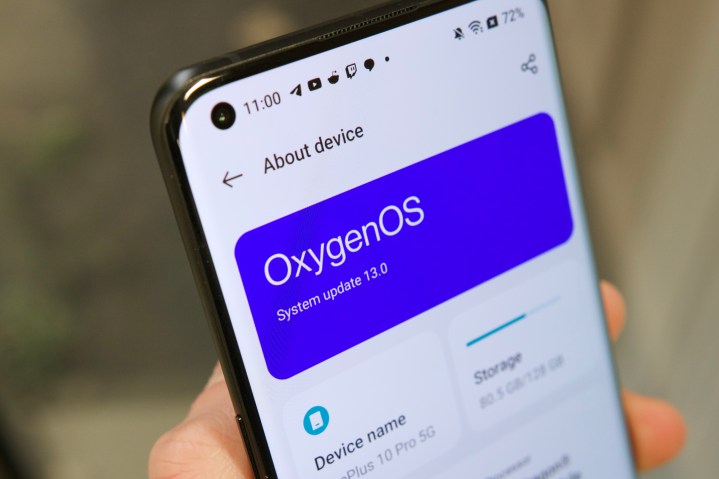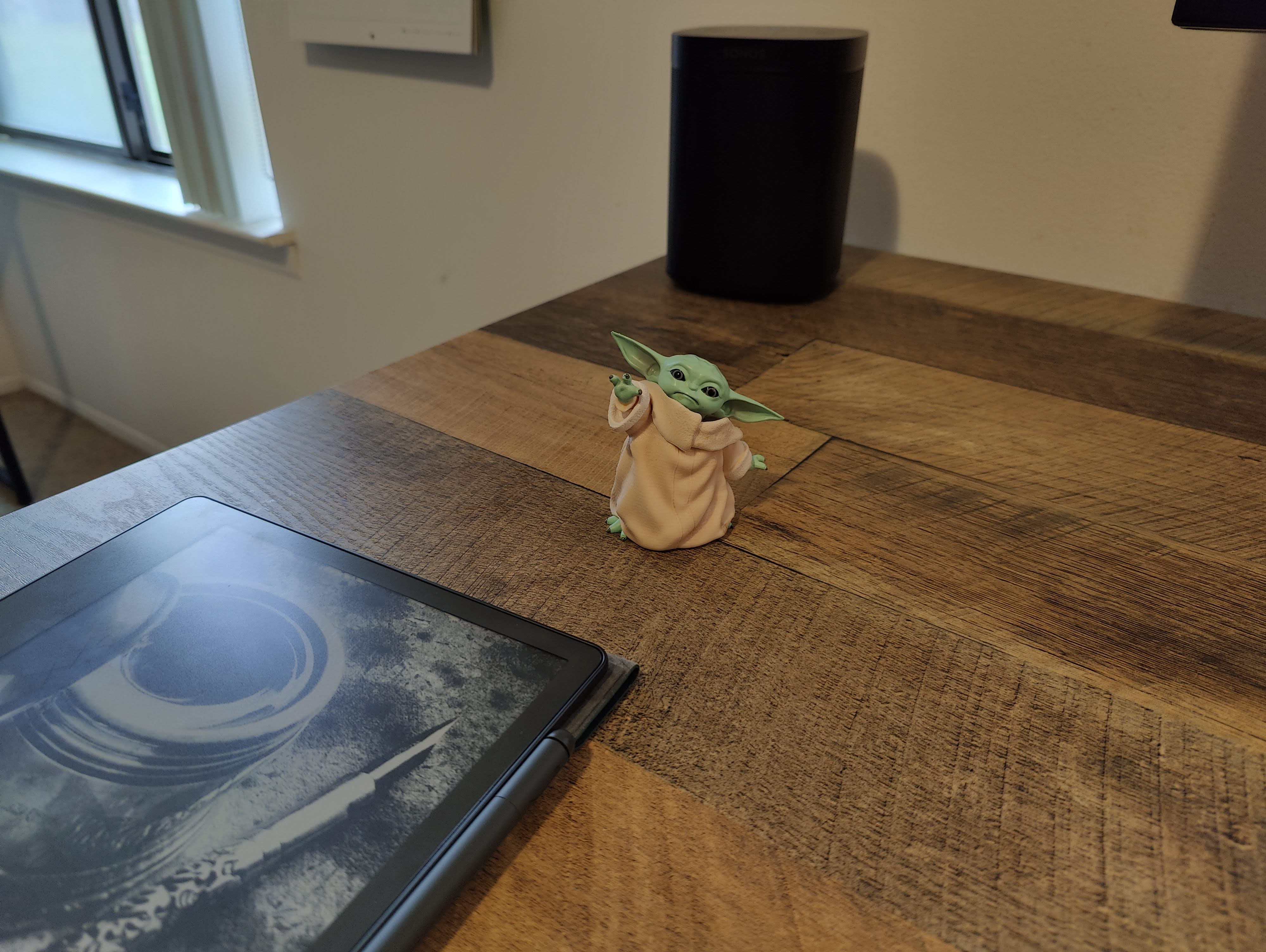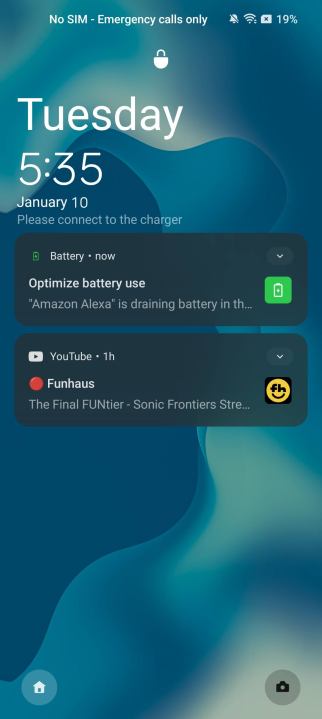[ad_1]
It’s hard to believe, but we’re quickly inching toward the OnePlus 11. The phone is already available if you live in China, but for the rest of the world, we only have to wait until February 7 for OnePlus to host its big ‘Cloud 11’ launch event in India.
In anticipation of the OnePlus 11, I decided to bust out my OnePlus 10 Pro and see how it’s holding up in early 2023. In short, there are a lot of things I still love about the phone, and it’s admirable how great it feels a year later. But even more than that, using the OnePlus 10 Pro in 2023 reminded me of how some key things have changed. As a result, I’m more nervous than excited about what we’ll get with the OnePlus 11. Let me explain.
Taking a step back with the design

Some of us on the Mobile crew at Digital Trends recently looked back at our favorite phones of 2022, and for my pick, I chose the OnePlus 10 Pro — largely because of how much I love its hardware. In a year that gave us some truly excellent handsets, the way the OnePlus 10 Pro looks and feels stands out so incredibly well.
I’ve been using the Volcanic Black model since early last year, and I adore how it feels. It’s technically glass, but OnePlus covered it with a soft finish that’s very reminiscent of velvet. Combined with the aluminum frame, rounded corners, and excellent weight, the OnePlus 10 Pro feels equal parts premium and comfortable; it’s just fantastic.

But it’s not just that. I also quite like OnePlus’s design for the rear camera bump. It’s bold and distinctive, yet also manages to be somewhat subdued. From the simple square housing to the Hasselblad logo discretely placed to the left of the cameras, it’s a great overall look.
Based on the images we’ve seen so far of the OnePlus 11, it looks like OnePlus has tried to replicate the OnePlus 10 Pro design once again … except not nearly as well.

The alert slider is back after much uproar from the OnePlus 10T, and it looks like the soft-touch Volcanic Black finish might return. But what is going on with the camera design? The housing begins as a straight line, turns into a circle, and the camera housing sits on top of it as a separate piece. The Hasselblad logo is also now slapped right in the middle of the cameras like a bad promotional sticker.
Maybe I’m being too critical of a few subtle changes, but there was an elegance and simplicity to the OnePlus 10 Pro that I really adored, and still do today. I don’t get that same feeling at all from the OnePlus 11.
Where are the camera upgrades?

While the OnePlus 10 Pro’s design remains excellent in 2023, the same can’t be said for its camera system. While Digital Trends’ Andy Boxall mostly liked the 10 Pro’s camera performance, he made it clear that it struggled with consistency — especially with the ultrawide and telephoto sensors. And that was in April.
Digital Trends’ Nadeem Sarwar pitted the OnePlus 10 Pro against the iPhone 14 Pro this past October, and in doing so, put a spotlight on how far behind the OnePlus 10 Pro’s camera setup really was compared to 2023 flagships.
I also gave the 10 Pro’s cameras another try while revisiting it, and while I wouldn’t call it a bad camera system, it certainly wouldn’t be my first choice. Even with the assistance of Hasselblad, the OnePlus 10 Pro still makes some odd choices with how it captures colors. Sometimes, it oversaturates things and adds warm/orange tints where they don’t belong. Other times, colors appear too cool and lifeless.
The color differences between the main, ultrawide, and telephoto cameras also remain stark. The same exact scene can have a completely different look/feel depending on which sensor you shoot with, and that’s never a good thing.
I don’t expect a phone from a year ago to go toe-to-toe with Apple’s best. But the reason this worries me so much is that we aren’t expecting significant camera upgrades for the OnePlus 11. Based on its launch in China, we know the OnePlus 11 will have a 50MP main camera, 49MP ultrawide camera, and 32MP telephoto camera with 2x zoom. For context, the OnePlus 10 Pro has a 48MP main camera, 50MP ultrawide camera, and an 8MP 3.3x telephoto camera.
OnePlus can’t afford to play it safe with the OnePlus 11.
We’ll have to wait a while longer before we know exactly what sensors OnePlus is using for the OnePlus 11, and what sort of changes OnePlus and Hasselblad have made to the software and image processing. But looking at the specs we do know, there doesn’t appear to be much of a change. If anything, all we know for certain is that the telephoto capabilities are downgraded from 3.3x to 2x.
In a world where Google and Apple made significant camera gains with the Pixel 7 Pro and iPhone 14 Pro last year, OnePlus can’t afford to play it safe with the OnePlus 11. And it looks like that’s precisely what the company may end up doing.
Software that’s headed in the wrong direction

And, finally, there’s the current software situation for OnePlus phones. The OnePlus 11 is expected to ship with Android 13 paired with OnePlus’s OxygenOS 13 interface layered on top of it. I first tried OxygenOS 13 when it was in open beta this past August, and at the time, I really didn’t like it. The software felt clunky and heavy, was riddled with bugs, and had seemingly endless features tacked on just for the sake of it. In other words, a far cry from the old “fast and smooth” days of prior OxygenOS versions.
Coming back to a stable build of OxygenOS 13 running on the OnePlus 10 Pro in early 2023, are things any better? The software is more stable, sure, and all of the technical bugs appear to be gone. But OxygenOS 13 still very much feels like OxygenOS 13, and not in a good way.
It all comes back to the software feeling heavy. Say you open the app drawer, scroll around a bit, and try to swipe down to go back to your home screen. If you try closing the app drawer too quickly, it refuses to close — instead, you’ll just pull your app icons down like you reached the top of a page and can’t go any further. You have to wait a beat after scrolling and then swipe down to go back home.
There’s a similar hiccup with notifications. On most Android phones, you can freely swipe left or right on a notification to dismiss it. With OxygenOS 13, swiping right on a notification displays three options for it: snooze, delete, or notification settings. If you want to clear the notification, you have to swipe right twice or swipe and then tap the trash icon. It’s infuriating.
OxygenOS 13 still very much feels like OxygenOS 13, and not in a good way.
But it’s not just those two little examples. I regularly get “battery optimization” notifications just because an app is running in the background, notifications are slow to come in, and the Settings app is a bloated mess that you’re bound to get lost in.
Is it possible the OnePlus 11 has a few software tricks up its sleeve to clean things up and make OxygenOS a better experience? Sure. But we haven’t seen any indication of that thus far. Assuming the OnePlus 11 has the same software present on the OnePlus 10 Pro today, we’re in for a bumpy road.
I want OnePlus to knock it out of the park

At the beginning of last year, it looked like OnePlus was heading in a good direction. The OnePlus 10 Pro came out, was a really solid handset for the money, and got me excited about what would happen next.
Then the OnePlus 10T came out and became a device I struggle to recommend to anyone. OnePlus then showed us what OxygenOS 13 looked like, and my worries heightened even more.
I want the OnePlus 11 to be a major win for the company. The second half of last year was a rough one for OnePlus, and it needs to start 2023 on the right foot. Using the OnePlus 10 Pro again reminded me how good OnePlus can be when its head is in the game, and I hope the OnePlus 11 is another reminder of that. But early signs suggest that won’t be the case, and as a OnePlus fan, it’s disheartening to see.
Editors’ Recommendations
[ad_2]
Source link


























